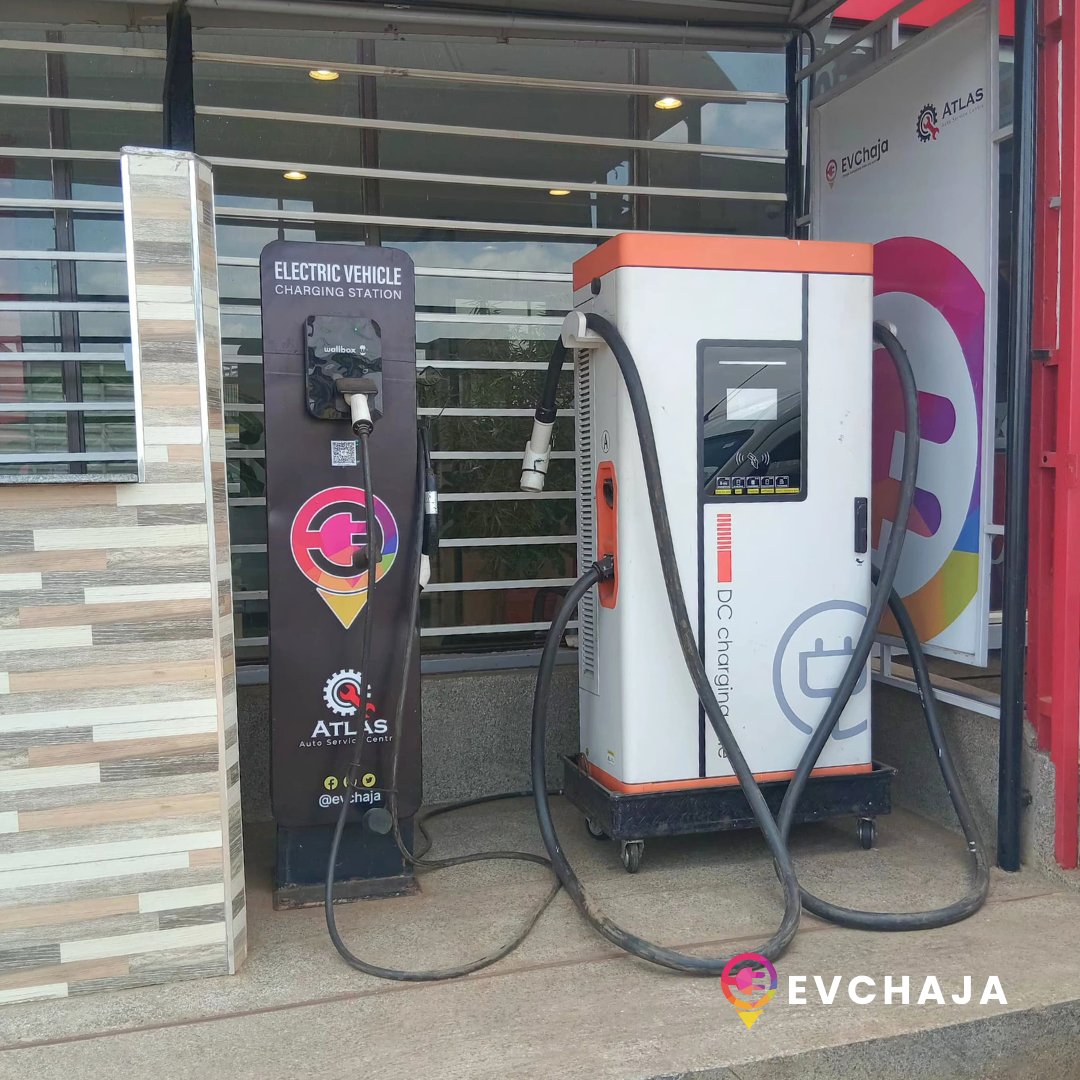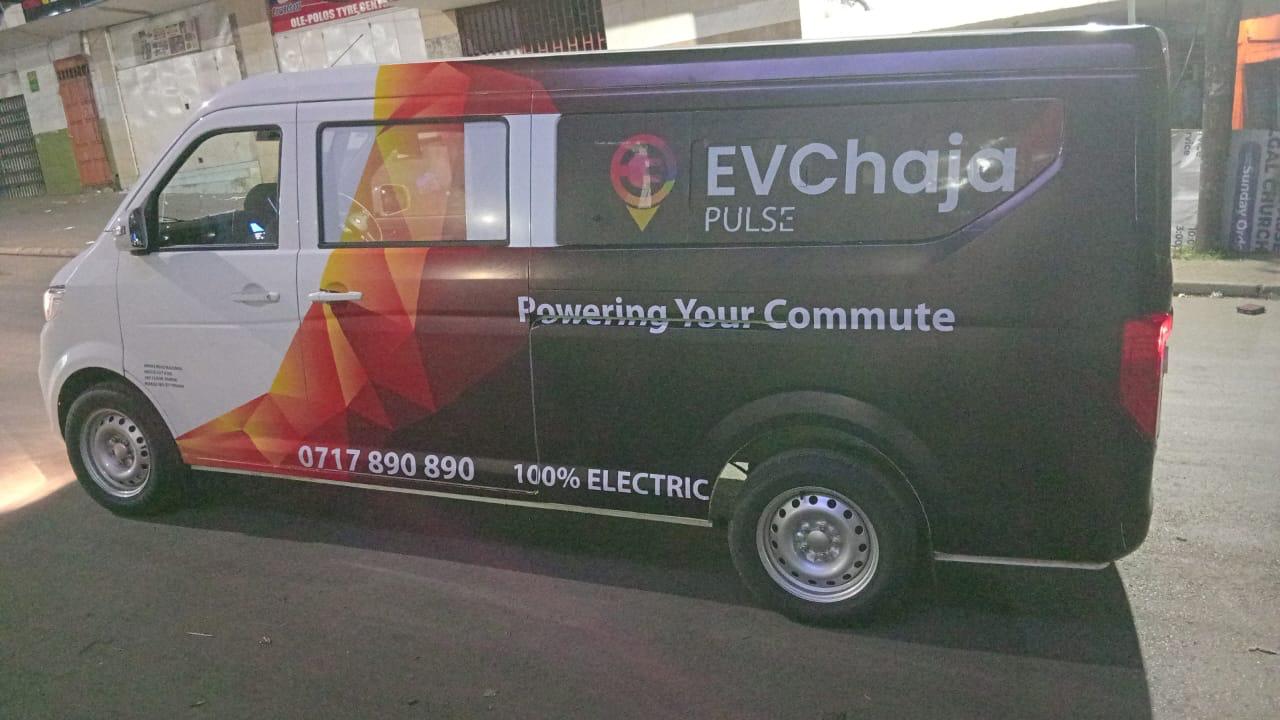Support CleanTechnica’s work through a Substack subscription or on Stripe.
Kenyan company EVChaja, originally set up as a charge point operator in November 2020, has since grown its operations and charging network to several Kenyan cities and towns, including Nairobi, Mombasa, Kisumu, Nakuru, and Nanyuki. Leveraging this charging network, starting in Nairobi, and following feedback from some customers, EVChaja also launched a corporate shuttle and B2B service using electric vans. Fixed routes with well known schedules are perfect for electrification and EVChaja is focusing on servicing this market.
EVChaja’s shuttle service provides scheduled Staff Shuttles on several fixed routes to and from offices, call centers, and industrial sites in and around Nairobi. The service also supports other regular routes such as airport transfers, daily commutes, and inter-office transport for companies with multiple campuses. EVChaja says corporate charters for retreats, team-building events, and field visits are also supported. These are activities that are planned in advance, making route planning and charging easy to support with electric vans.
This model lowers operational costs for businesses and also takes away the hassle of operating a non-core activity such as a transport service, leaving corporates to focus on their core business. The model provides organizations with fully managed electric mobility solutions, including the vehicle, charging, driver, and operational oversight. EVChaja now operates a growing fleet of electric vans, all managed through its in-house charging network. Here is a summary of what some of the operations look like:
- Each electric van completes 8 round trips daily, averaging 56 km per trip, translating to ~450 km of daily operation per vehicle. 450km a day! That means most corporations can comfortably have their shuttle service requirements met via this electric van service.
- The vans typically charge once in the morning (for day shift) and once in the evening (for night shift), with an additional top-up in the evening where extra trips are added. EVChaja charges these vans at their DC charging sites. EVchaja says charging is done using EVChaja’s fast and reliable charging infrastructure, ensuring minimal downtime and maximum utilization.
- Each full charge powers a 300 km range, sufficient for most daily staff commute schedules.
- More importantly, the vans are zero-emission, quiet, and cost significantly less to operate compared to diesel or petrol shuttles.

EVChaja is now working to scale its B2B e-mobility fleet nationwide, targeting corporate clients, airports, tech parks, and industrial zones. The company plans to integrate solar-powered charging, AI-based route optimization, and carbon tracking dashboards for clients. The long-term vision: establish Kenya’s first 100% electric staff transport network that links clean energy with daily mobility. EVChaja CEO Brigid Gachoki says, “Our goal is to make every kilometer cleaner and every corporate commute smarter. For many companies, staff transport is the first and easiest step toward achieving meaningful ESG outcomes.”

Kenya’s electric vehicle market for larger vehicles, such as cars, vans, and buses, has a lot of potential. The electric motorcycle sector is the one that has really started to flourish in Kenya, but the electric car, van, and bus sectors are the ones to watch out for in terms of explosive growth in the near future. Looking at EV penetration in the prominent vehicle segments, in 2024, just over 7% of new motorcycle registrations were electric, followed by 4% for electric tuk tuks, 1.1% for electric buses and minibuses, and then 0.18% for electric cars. As you can see, electric car adoption is lagging in a big way. That means there is a lot of room for growth in the larger vehicle segments. Utilization at charging sites for large vehicles is growing nicely now, as shown below by this example from EVChaja.

Overall, including consumption from electric motorcycles, cars, and buses, for the financial year that ended on the 30th of June 2025, Kenya’s Electricity and Petroleum Regulatory Authority (EPRA) reports that electric mobility consumption was 5.04 GWh, which is a whopping 300% increase from the previous financial year’s consumption of 1.26 GWh. EPRA says this growth has been spurred by the increased uptake of the e-mobility tariff. EPRA reports that as of June 2025, there were 69 customers billed under the e-mobility tariff category. The actual consumption is probably much higher as not all owners of electric vehicles and operators of electric mobility firms are connected to smart meters that are on this mobility tariff. Overall, EPRA says the electricity supply sector experienced significant growth. Annual electricity generated increased from 13,684.60 GWh in 2024 to 14,472 GWh. The peak demand for electricity also increased by 6.4% from 2,177 MW to 2,316 MW.
Installed electricity generation capacity as of June 2025 was 3,840.8 MW, comprising 3,192.0 MW of interconnected capacity, 603.8 MW of captive capacity, and 45.0 MW of off-grid capacity. The great thing about Kenya’s energy mix is that installed capacity from renewable energy sources accounts for 80.48% of Kenya’s total installed capacity. A total of 2,930.2 MW of the country’s generation capacity is from renewables. Distributed solar PV installed by commercial and industrial enterprises on their own premises was also on the up. EPRA says in the period under review, captive solar PV plants cumulative installed capacity reached 300.5 MW. Kenya has a target of 100% of the electrical energy generated from renewable energy sources by 2030. The country is not far off and it is quite possible to achieve this. Accelerating the adoption of electric mobility will go a long way in reducing CO2 emissions in Kenya as the transport sector is one of the major contributors of emissions. The move will also help reduce Kenya’s fuel import bill, saving the much needed foreign currency.
Another issue that has been affecting Kenya’s electricity landscape is the issue of energy curtailment. For the financial year that ended on the 30th of June 2025, EPRA reports that energy curtailment was reduced by 17.72% from 812.8 GWh curtailed in the previous year to 668.7 GWh in the year ended June 2025. Still, 668.7 GWh is almost 5% of the energy generated during that period. Most of the energy curtailment happens overnight at geothermal plants. A good chunk of this could be better utilized through overnight charging of electric vehicles. Kenya’s demand for fossil fuels is now close to $500 million per month! That’s a huge chunk of Kenya’s total import bill. At this pace, in 12 months, Kenya would be spending $6 billion on fossil fuel imports!
The continued reliance on fossil fuel imports is one of the main drivers of Kenya’s trade deficit. This is perhaps a perfect time to really catalyze the local electric mobility sector and to start to significantly reduce fuel imports by substituting those imports with locally generated renewable electricity to power electric vehicles.
Images courtesy of EVChaja
Disclosure: I own a few shares in EVChaja, and I have been an advisor to some companies in the Kenyan EV space — my small effort to help play a role in advancing Kenya’s electric mobility sector.
Sign up for CleanTechnica’s Weekly Substack for Zach and Scott’s in-depth analyses and high level summaries, sign up for our daily newsletter, and follow us on Google News!
Have a tip for CleanTechnica? Want to advertise? Want to suggest a guest for our CleanTech Talk podcast? Contact us here.
Sign up for our daily newsletter for 15 new cleantech stories a day. Or sign up for our weekly one on top stories of the week if daily is too frequent.
CleanTechnica uses affiliate links. See our policy here.
CleanTechnica’s Comment Policy


